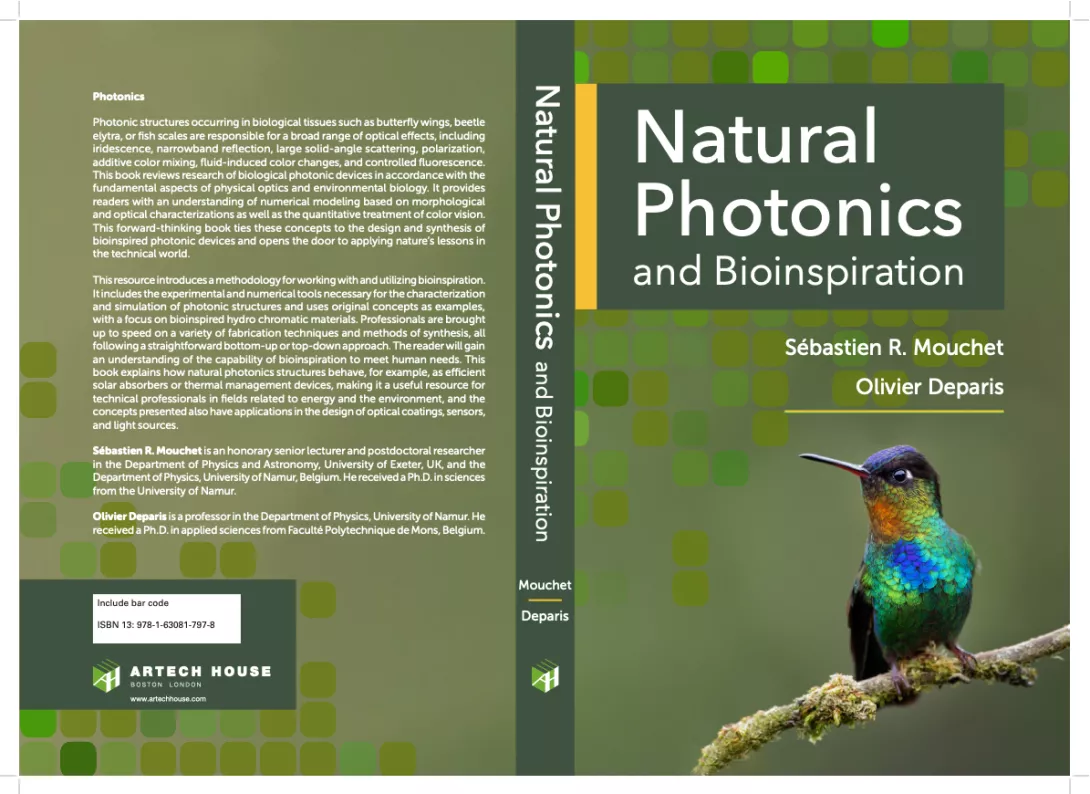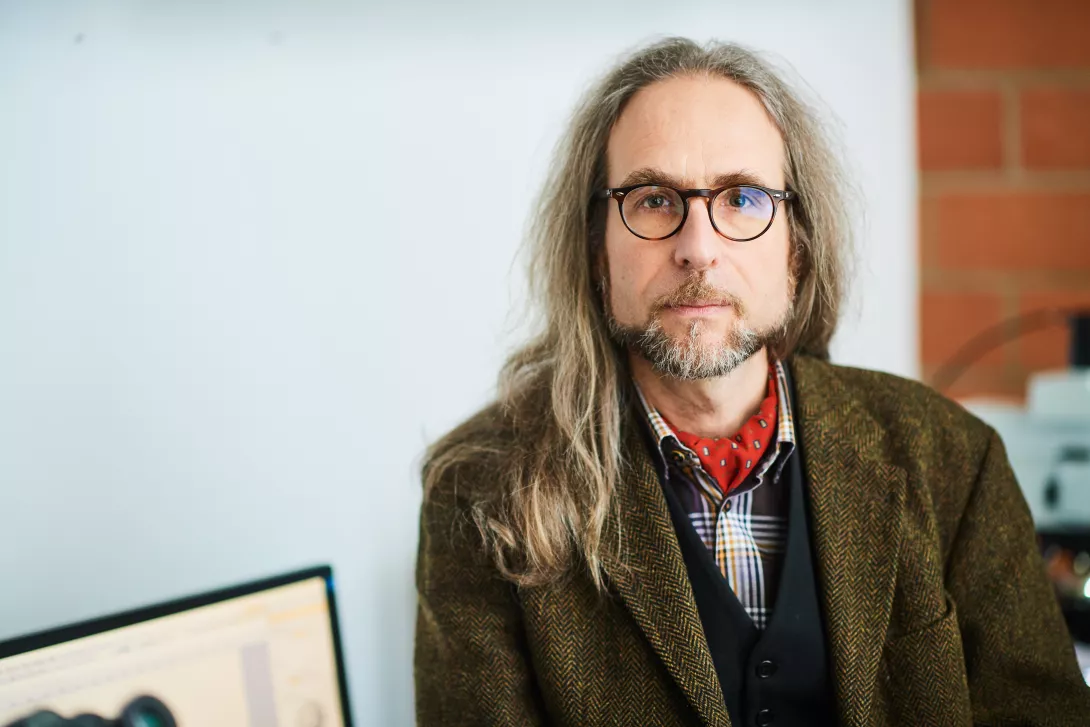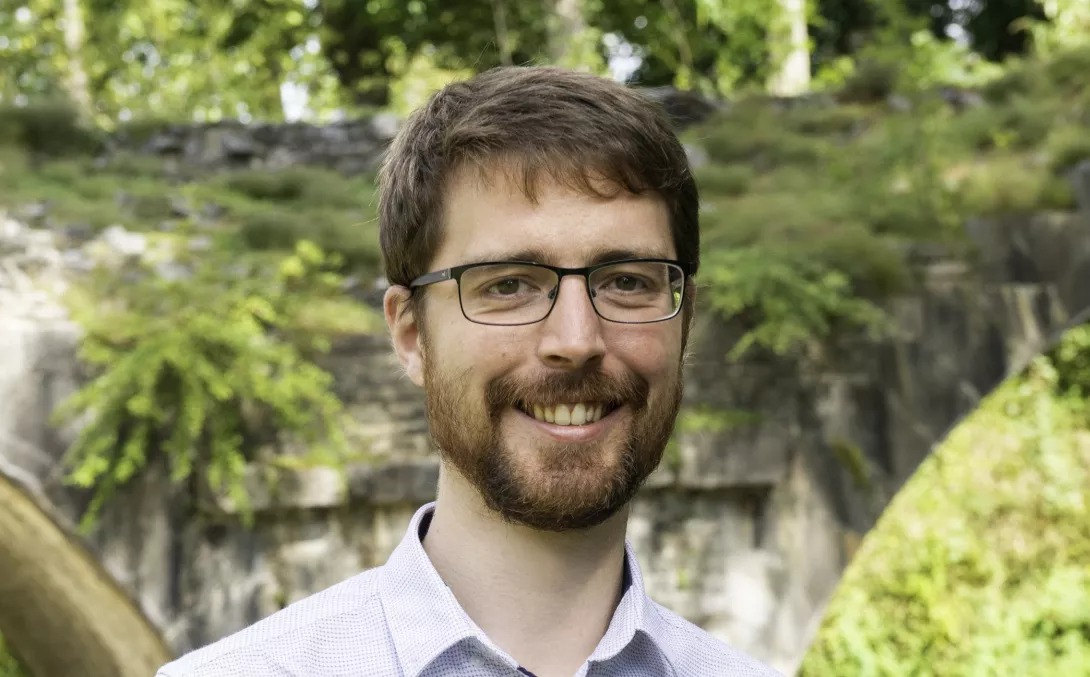Natural photonics, a young "exotic" and innovative branch of photonics
However, the subject was still in its infancy at that time and the words "natural photonics", which Jean-Pol liked to use to describe his team's research, were not really in use in the optical community at the time. "As for me, it was in 2009, when I was finishing my bachelor' degree in physics, that Jean-Pol's research inspired me. Thanks to him, I opted for a master degree with a strong focus on nano-optics and natural photonics and an internship within Prof. Doekele Stavenga's group at University of Groningen, the Netherlands”, Sébastien Mouchet tells us.
Natural photonics has grown on the optical science tree and has become an attractive interdisciplinary topic among the scientific community, continuing to bring together many more physicists, biologists, chemists and engineers. At the dawn of the 21st century, this "exotic" subject began to appear regularly on the program of leading conferences. In June 2013, Jean-Pol Vigneron died suddenly, leaving an exceptionally productive and pioneering contribution in the field of natural photonics. In the spring of 2014, Living Light, the first conference entirely dedicated to natural photonics, was organized at UNamur in his memory, which gave birth to the Living Light Conferences series.
“The idea of bringing together the pioneering work of Jean-Pol Vigneron, as well as that of other groups of researchers from around the world in a book, including our own contributions in the field, has been on our minds since his death. The title of the book, Natural Photonics and Bioinspiration, aims to reflect the balance that we intended to maintain between, on the one hand, fundamental aspects of physical optics and environmental biology, and, on the other hand, aspects of applied science related to observations of optical effects on natural organisms,” the authors explain. The book contains observations made in the field on natural species, numerical modeling based on morphological and optical characterizations and, ultimately, the design and synthesis of bioinspired photonic devices.
Natural Photonics & Bioinspiration abstract

Photonic structures occurring in biological tissues such as butterfly wings, beetle elytra, or fish scales are responsible for a broad range of optical effects including iridescence, narrow band reflection, large solid-angle scattering, polarization, additive colour mixing, fluid induced colour changes, and controlled fluorescence. This book “Natural Photonics and Bioinspiration” reviews research of biological photonic devices in accordance with the fundamental aspects of physical optics and environmental biology. It provides readers with an understanding of numerical modelling based on morphological and optical characterizations as well as the quantitative treatment of colour vision. This forward-thinking book ties these concepts to the design and synthesis of bioinspired photonic devices and opens the door to the applications of nature’s lessons in the technical world.
This resource introduces a methodology for working with and utilizing bioinspiration. It includes the experimental and numerical tools necessary for the characterization and simulation of photonic structures and uses original concepts as examples, with a focus on bioinspired hygrochromatic materials. Professionals are brought up to speed on a variety of fabrication techniques and methods of synthesis all following a straightforward bottom-up or top-down approach. The reader will gain an understanding of the capability of bioinspiration to meet human needs. This book’s explanation of how natural photonics structures behave as efficient solar absorbers or thermal management devices makes it a useful resource for technical professionals in the field of energy and environment, and the concepts presented in this book also have applications in the designs of optical coatings, sensors, and light sources.
The book’s foreword was written by Prof Serge Berthier (Paris Nanosciences Institute and Professor emeritus at University of Paris-Diderot, France) and by Prof Pete Vukusic (University of Exeter, UK). Dr Victoria L. Welch, a former University of Namur post-doctoral researcher, who used to work with Jean-Pol Vigneron and Olivier Deparis’s team, was in charge of the copy-editing.
The readership this book targets is interdisciplinary, ranging from postgraduate students and PhD students to postdoctoral researchers and academics. Optical engineers as well as physicists will be the most familiar to the core subject of the book (i.e., applied photonics).
The book is available on the editor’s website (Artech House).
The authors
Professor Olivier Deparis obtained his doctorate in applied sciences in 1997. He then carried out post-doctoral research mandates in several universities around the world. He joined the University of Namur in 2005 and became Professor in 2010. He has been Director of the Solid-State Physics Laboratory of the Department of Physics since 2019. He has also been a member of the Optical Society (OSA) since 1999 from which he received the title of senior member last August.
Fifteen years of experience in the field of photonics in natural organisms led him to co-organize the first edition of the “Living Light Conferences” series in 2014 and now to co-write this book. Over the past ten years he has continued his research in optics, with a focus on optical materials, nanostructures, solar energy, photocatalysis and, more recently, the science of cultural heritage.
He is the author of more than 170 articles in scientific journals, the vast majority on photonics. He holds two patents related to optical materials.
Professor Olivier Deparis

Contact Olivier Deparis
Dr Sébastien R. Mouchet obtained his doctorate in physics from the University of Namur in 2015. He carried out his research as a postdoctoral researcher at the University of Exeter, UK, for approximately 5 years. He is now a postdoctoral researcher at the University of Namur, where he was appointed honorary lecturer then senior honorary lecturer. He recently secured a BEWARE Fellowship from the Walloon region, which enables him to develop infrared radiation absorber following a bioinspired approach.
Dr. Mouchet is a member of the editorial board of Data in Brief (Elsevier). He co-organized the Belgian editions of Photonics Online Meetup (bePOM) in 2020 and 2021, as well as the 2021 edition of the “Living Light Conferences” series dedicated to early career researchers. He will also co-organize the next edition of “Women in Science” next February.
His research focuses on the physical origins of various visual effects developed by natural organisms: from additive colors in photonic polycrystals and fluid-induced color changes to fluorescence emission in natural photonic structures and UV scattering in the integuments.
Doctor Sébastien Mouchet

Contact Sébastien Mouchet
